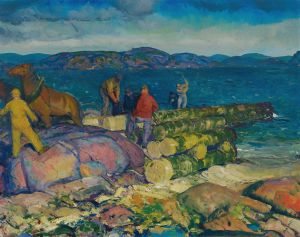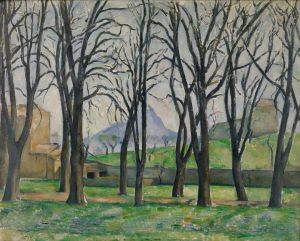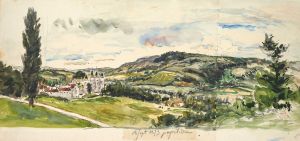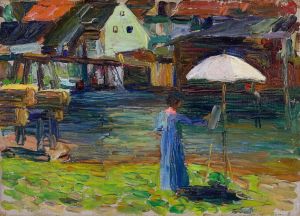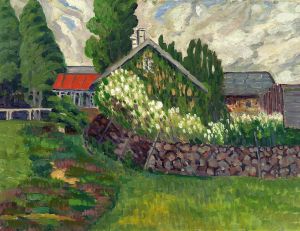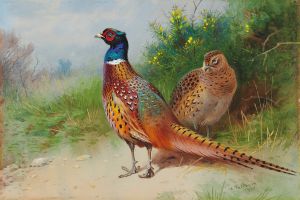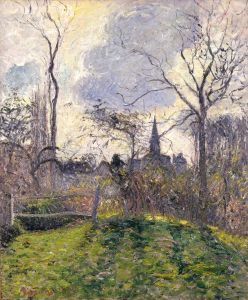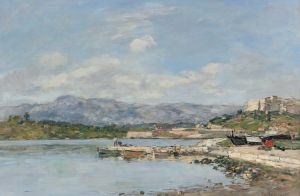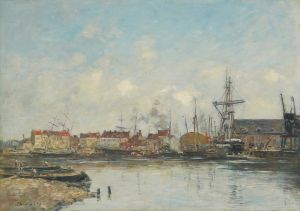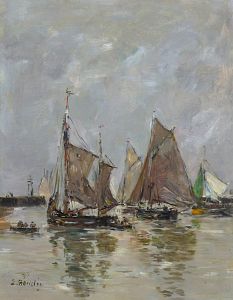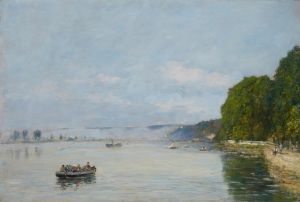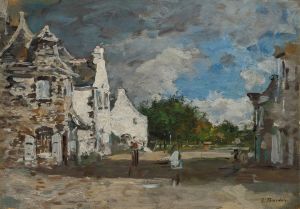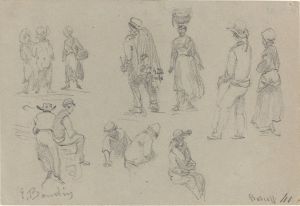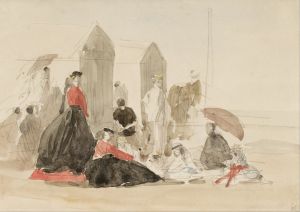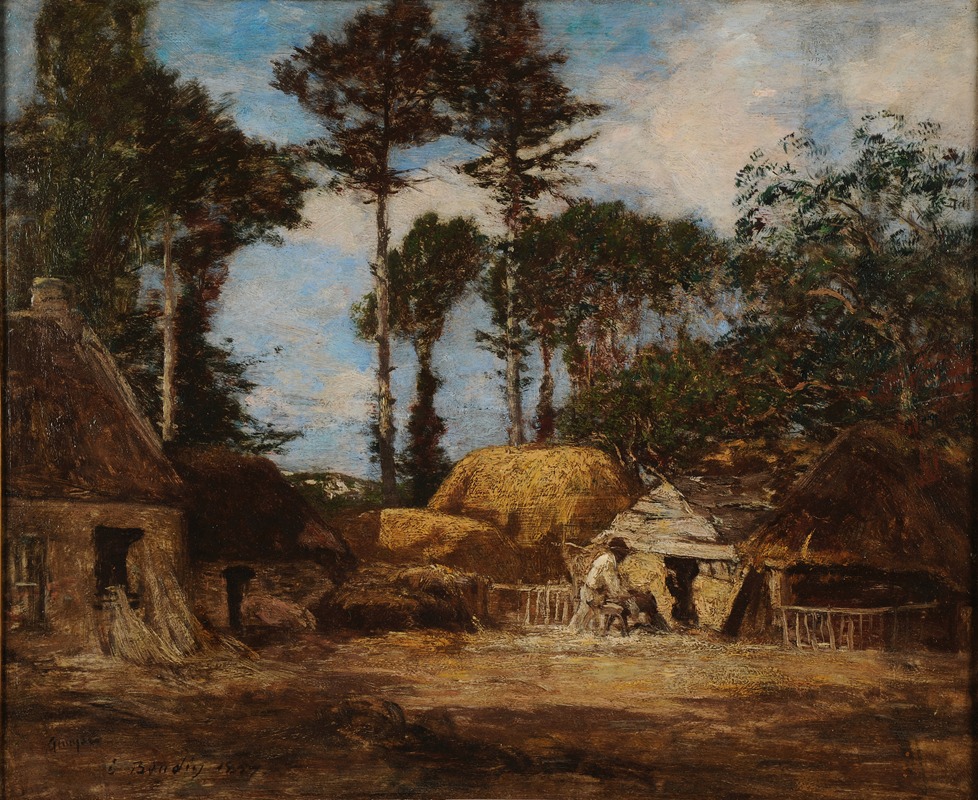
Une ferme bretonne
A hand-painted replica of Eugène Boudin’s masterpiece Une ferme bretonne, meticulously crafted by professional artists to capture the true essence of the original. Each piece is created with museum-quality canvas and rare mineral pigments, carefully painted by experienced artists with delicate brushstrokes and rich, layered colors to perfectly recreate the texture of the original artwork. Unlike machine-printed reproductions, this hand-painted version brings the painting to life, infused with the artist’s emotions and skill in every stroke. Whether for personal collection or home decoration, it instantly elevates the artistic atmosphere of any space.
"Une ferme bretonne" (A Breton Farm) is a painting by the French artist Eugène Boudin, who is widely regarded as one of the precursors of the Impressionist movement. Born on July 12, 1824, in Honfleur, France, Boudin was known for his landscape paintings and his ability to capture the transient effects of light and atmosphere. He had a significant influence on the young Claude Monet, who later became a leading figure in the Impressionist movement.
The painting "Une ferme bretonne" depicts a rural scene in Brittany, a region in the northwest of France known for its distinct cultural heritage and picturesque landscapes. Boudin had a particular affinity for Brittany, and he frequently visited the region to paint its rugged coastlines, quaint villages, and pastoral settings. This work is a testament to his skill in rendering the natural beauty and rustic charm of the Breton countryside.
In "Une ferme bretonne," Boudin employs his characteristic loose brushwork and a light, airy palette to convey the serene and bucolic atmosphere of the farm. The composition typically features a farmhouse or a cluster of rural buildings, surrounded by fields and possibly some livestock or figures engaged in daily activities. The sky, often a significant element in Boudin's works, is likely depicted with a nuanced treatment of clouds and light, reflecting his keen observation of weather conditions and their effects on the landscape.
Boudin's approach to painting en plein air (outdoors) allowed him to capture the fleeting moments of natural light and the changing moods of the sky. This method was revolutionary at the time and paved the way for the Impressionists, who further developed these techniques. Boudin's works, including "Une ferme bretonne," are celebrated for their spontaneity, freshness, and the artist's deep connection with nature.
Throughout his career, Boudin received recognition and accolades for his contributions to art. He exhibited regularly at the Paris Salon and was awarded the prestigious Légion d'honneur in 1892. His works are held in high esteem and can be found in major museums and private collections around the world.
"Une ferme bretonne" exemplifies Boudin's mastery in capturing the essence of rural life and the natural environment. It stands as a significant piece within his oeuvre, reflecting his dedication to portraying the beauty of the French countryside and his influence on the development of modern landscape painting.





